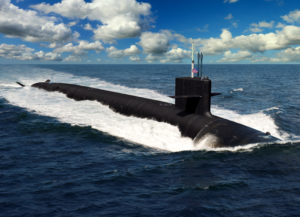
The proposed W93 sea-launched warhead, the nuclear tip of planned next-generation U.S. submarine-launched ballistic missiles, will share technology with United Kingdom's next nuclear weapon, Pentagon officials said Thursday. W93 will “support a parallel Replacement Warhead Program in the United Kingdom whose nuclear deterrent plays an absolutely vital role in NATO’s overall defense posture,” Adm. Charles Richard, commander of U.S. Strategic Command, wrote in testimony prepared for a Thursday hearing of the Senate Armed Services Committee. The Department of Energy's National…

 By
By 










